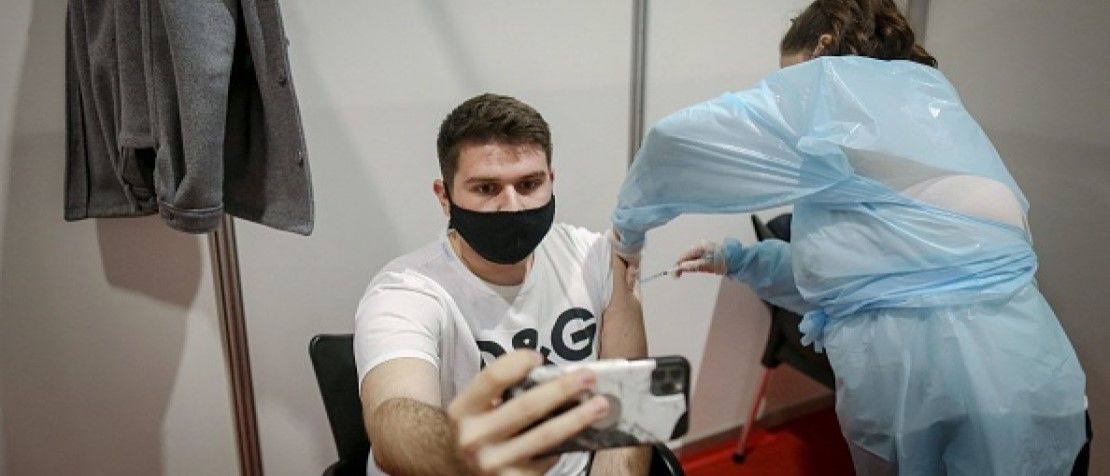
Digital commitment enables vaccine uptake in Serbia
ITU News asked Prime Minister Ana Brnabić about her country’s COVID-19 response, digital development plans, and strategies for inclusion and accessibility.
As seen from outside, Serbia has achieved some impressive successes lately. How do you explain your country’s comparatively positive health and economic results?
A forward-looking approach helped to get us where we are today – first in Europe in gross domestic product (GDP) growth.Serbia is now first in Europe and a world leader in terms of people vaccinated against COVID-19. The COVID-19 pandemic has underlined the importance of communication and information access for all citizens. As a result, we are committed to digitizing our country and ensuring these services are inclusive throughout.Smart use of information and communication technologies (ICT) was also a big reason for the successful launch of our immunization process.
Your country of about 8 million people now aims to become a model “digital society”. What does this mean in practice?
A few years ago, we shifted gears and placed digital transformation at the top of our government agenda. We considered it not just a priority, but a necessity to reform public administration and improve citizens’ lives – expand public services, advance our economy through better education, strengthen the business environment, attract foreign direct investment and create jobs. This is an ever-evolving process, but we are on the right track and have made great progress. Many digitization policies are in place. An artificial intelligence (AI) strategy, digital assets law, sandboxes (for computer security), and digital health strategy are under preparation. Our e-government programme will create about 300 new electronic services for citizens and businesses.
How do you plan to advance digital development further?
In terms of infrastructure, we aim to provide broadband to 99 per cent of households by 2025. We first assessed current coverage through a mapping exercise by the national regulatory agency and then launched a programme to deliver high-speed, affordable communications to over half a million households in sparsely populated areas.We view basic broadband access as a right for citizens.
This necessitates establishing a universal service obligation (USO) and incentivizing private investment. In education, new regulations support the use of assistive technologies, introduce distance learning to reach more students, and call for teaching materials based on the universal design principle. Disruptive technologies will be taught throughout our education cycle, preparing our students with skills like coding to succeed in future careers.
We are among the first countries in Europe to introduce programming as a mandatory subject in elementary schools. Many students then continue in specialized ICT programmes in high schools. To accommodate this wave of students with digital interest and abilities, our technical faculties are being expanded by 20 per cent.
Along with other European countries, Serbia plans to introduce digital textbooks, train teachers for the digital classroom, and equip each classroom with a wireless local area network (WLAN) from the earliest days of school. In parallel, we are nurturing the start-up ecosystem and fostering innovation. We hope to soon open the region’s first AI institute.
How can you make sure all citizens reap the benefits of digital and socio-economic progress?
Digital inclusion is a crucial element to guarantee personal autonomy, including each person’s ability to achieve decent living standards and prosperity through full participation in economic, social, and cultural life.
Two basic preconditions to make this achievable are digital literacy and connectivity for all citizens.
Serbia’s New Generation Networks strategy recognizes social inclusion as critical to economic development goals, alongside building digital skills and literacy.
How are such aims reflected in Serbia’s National Strategy for Improving the Status of Persons with Disabilities for 2020-2024?
The core focus is on ensuring ICT access along with introducing assistive technologies. Our strategy also foresees the need for reliable information access for people with disabilities, particularly when it comes to political participation, justice, social and health services, employment preferences, media services and education at all levels.
It aims to ensure inclusive access to new technologies, as well as inclusive protocols for information services during emergency situations. Lastly, all state bodies must ensure accessibility in their websites and e-government services.
How can the international community help?
The sharing of successful practices between partners is integral. For instance, international cooperation was immensely helpful in conducting Serbia’s national ICT accessibility assessment.
The International Telecommunication Union (ITU) has laid out updated guidelines, including principles and good practices to ensure digital inclusion in all our future actions.
The Prime Minister of Serbia will speak at the launch event of the ITU study The Assessment of Digital Accessibility Policies in Serbia (date to be confirmed), co-organized by the Prime Minister’s Office and ITU. Learn more here.
Header image: A Bosnian citizen takes a selfie while receiving a dose of the AstraZeneca Covid-19 vaccine at one of Belgrade’s vaccination centres on March 28, 2021. Credit: OLIVER BUNIC/AFP via Getty Images
